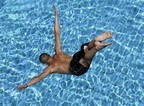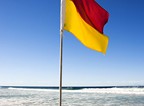1. Do not move away from the shore by swimming when you know you are not a good swimmer. Consider that the return is more tedious. On sandy beaches do not swim outside the monitoring area bounded by red buoys beyond which the cruisers are allowed to move.
2. Do not swim alone or at night when you do not have visual contact with your swimming partner.
3. Never swim on a full stomach. Do not enter the water if at least 3 hours have gone by from the time you consumed your last meal. On the other hand, avoid entering the water if you are hungry because your body will miss important sources of energy that help to cope with natural charges are during your stay at sea.
4. Do not consume alcohol before swimming
5. Avoid diving in areas that you do not know the depth or the configuration of the bottom.
6. Take very seriously the recommendations of the warning signs.
7. Always go ashore when the Red Flag has risen by Lifeguards or waves / currents have become very hazardous or the waters have become contaminated or you are at risk by something else.
8. Avoid swimming by or entering the marked with red buoys corridors made for the movement of vessels.
9. Do not allow young children to the sea without watch.
10. Do not stay too long in the sun because there is a risk for burns and sunstroke.
11. If you get tired while swimming or get a cramp do not panic. Stay on the surface in a horizontal position and keep calm when you rest or yell for help to attract the attention of the lifeguards.
12. If you experience dizziness or chills immediately exit from the sea.
13. Never waste energy fighting against the tide. Do not panic when the current takes you away, always save energy. Simply turn your mouth and nose in the opposite direction that the wind blows and just try to hold on to the surface. If the current is parallel to the coast, swim along with it approaching the beach at an angle. Soon help will come.
14. If you notice any swimmer to asking for help:
a) If you are not a good swimmer also call for help
b) if you are a good swimmer but do not possess the skills of a Lifeguard: throw a lifebelt to the person needing help, or a rope or a paddle unless it is absolutely necessary to fall into the water.
If you do swim keep your head out of the water to be constantly in sight of the person needing help. Reach him from behind to avoid a “deadly embrace”. The person drowning will see you as a lifeline and if you approach from the front you are at a mortal risk. Tow the drowning person out by his hair, jaw or arms. Just pull ashore and call an ambulance. if you know about First Aid techniques immediately begin artificial respiration and massage.

